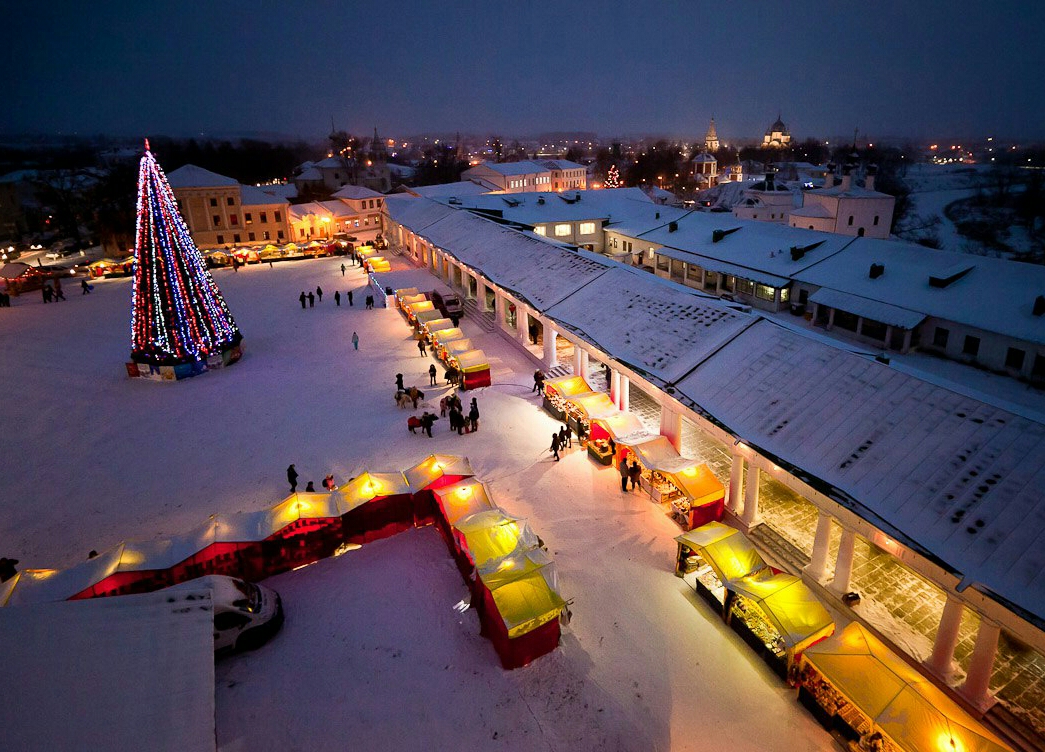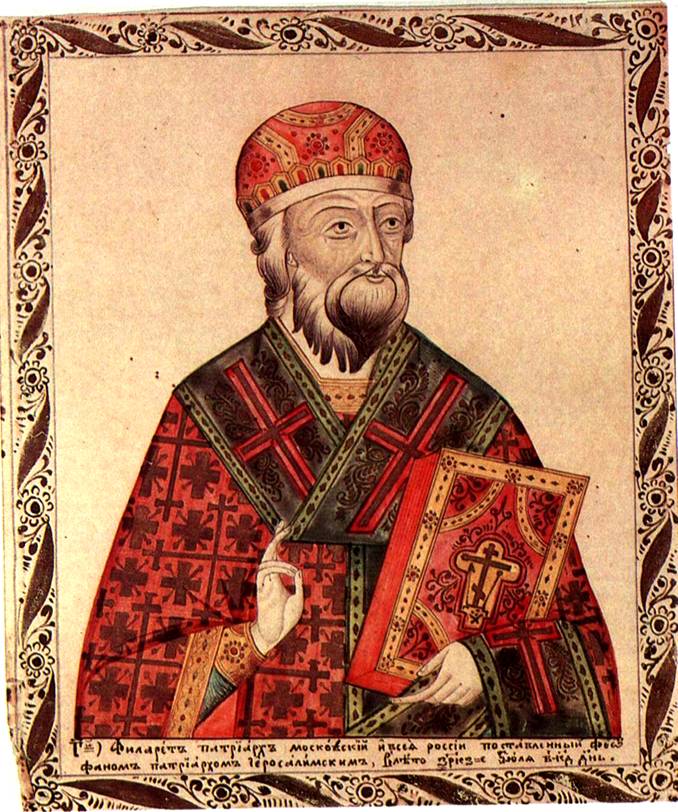|
Patriarch Joasaphus I
Joasaphus I (russian: ąśąŠą░čüą░čä I, translit=Ioasaf I; ? ŌĆō 28 November 1640, Moscow) was the fifth Patriarch of Moscow and All Russia (1634ŌĆō1640). Biography Joasaphus took monastic vows in Solovetsky Monastery. In 1621, he became a hegumen at Pskovo-Pechorsky Monastery. In January 1627, Joasaphus was appointed archbishop of Pskov and Velikiye Luki. He is known for his protection of Pskov's trade privileges and resistance to pretensions of the German merchants, for which he would be punished by the patriarch. Patriarch of Moscow Upon Philaret's death in 1634, Joasaphus was appointed his successor, upon his recommendation. His selection to the role of Patriarch was held in the traditional way: The Council of Bishops of the Russian Orthodox Church (knowing in advance the will of Mikhaill Romanov) pointed to three candidates, of whom the Tsar could choose. Enthronement of the new Primate of the Russian Orthodox Church was held, also in keeping with tradition, in the Cathed ... [...More Info...] [...Related Items...] OR: [Wikipedia] [Google] [Baidu] |
Patriarch Of Moscow And All The Rus'
The Patriarch of Moscow and all Rus' (russian: ą¤ą░čéčĆąĖą░čĆčģ ą£ąŠčüą║ąŠą▓čüą║ąĖą╣ ąĖ ą▓čüąĄčÅ ąĀčāčüąĖ, translit=Patriarkh Moskovskij i vseja Rusi), also known as the Patriarch of Moscow and all Russia, is the official title of the Bishop of Moscow who is the primate of the Russian Orthodox Church. It is often preceded by the honorific "His Holiness". While as the diocesan bishop of the Moscow diocese he has direct canonical authority over Moscow only, the Patriarch has a number of church-wide administrative powers within and in accordance with the charter of the Russian Orthodox Church. [...More Info...] [...Related Items...] OR: [Wikipedia] [Google] [Baidu] |
Suzdal
Suzdal ( rus, ąĪčāąĘą┤ą░ą╗čī, p=╦łsuzd╔Öl╩▓) is a town that serves as the administrative center of Suzdalsky District in Vladimir Oblast, Russia, which is located on the Kamenka River, north of the city of Vladimir. Vladimir is the administrative center of the surrounding oblast. As of the 2021 Census, its population was 9,286. Suzdal is one of the oldest Russian towns. In the 12th century, it became the capital of the principality, while Moscow was merely one of its subordinate settlements. Currently, Suzdal is the smallest of the Russian Golden Ring towns, but it has more than 40 historically important monuments and 200 architectural sites. Several of these sites are listed as UNESCO World Heritage Sites. History The town's history dates back probably to 999 or 1024, and in 1125 Yury Dolgoruky made Suzdal the capital of the Rostov-Suzdal principality. Suzdal began to function as a capital at the time when Moscow was still a cluster of cowsheds. In 1157, Andrei Bog ... [...More Info...] [...Related Items...] OR: [Wikipedia] [Google] [Baidu] |
17th-century Russian Clergy
The 17th century lasted from January 1, 1601 ( MDCI), to December 31, 1700 ( MDCC). It falls into the early modern period of Europe and in that continent (whose impact on the world was increasing) was characterized by the Baroque cultural movement, the latter part of the Spanish Golden Age, the Dutch Golden Age, the French ''Grand Si├©cle'' dominated by Louis XIV, the Scientific Revolution, the world's first public company and megacorporation known as the Dutch East India Company, and according to some historians, the General Crisis. From the mid-17th century, European politics were increasingly dominated by the Kingdom of France of Louis XIV, where royal power was solidified domestically in the civil war of the Fronde. The semi-feudal territorial French nobility was weakened and subjugated to the power of an absolute monarchy through the reinvention of the Palace of Versailles from a hunting lodge to a gilded prison, in which a greatly expanded royal court could be more easily k ... [...More Info...] [...Related Items...] OR: [Wikipedia] [Google] [Baidu] |
Burials At Dormition Cathedral, Moscow
Burial, also known as interment or inhumation, is a method of final disposition whereby a dead body is placed into the ground, sometimes with objects. This is usually accomplished by excavating a pit or trench, placing the deceased and objects in it, and covering it over. A funeral is a ceremony that accompanies the final disposition. Humans have been burying their dead since shortly after the origin of the species. Burial is often seen as indicating respect for the dead. It has been used to prevent the odor of decay, to give family members closure and prevent them from witnessing the decomposition of their loved ones, and in many cultures it has been seen as a necessary step for the deceased to enter the afterlife or to give back to the cycle of life. Methods of burial may be heavily ritualized and can include natural burial (sometimes called "green burial"); embalming or mummification; and the use of containers for the dead, such as shrouds, coffins, grave liners, and bur ... [...More Info...] [...Related Items...] OR: [Wikipedia] [Google] [Baidu] |
1640 Deaths
Year 164 ( CLXIV) was a leap year starting on Saturday (link will display the full calendar) of the Julian calendar. At the time, it was known as the Year of the Consulship of Macrinus and Celsus (or, less frequently, year 917 ''Ab urbe condita''). The denomination 164 for this year has been used since the early medieval period, when the Anno Domini calendar era became the prevalent method in Europe for naming years. Events By place Roman Empire * Emperor Marcus Aurelius gives his daughter Lucilla in marriage to his co-emperor Lucius Verus. * Avidius Cassius, one of Lucius Verus' generals, crosses the Euphrates and invades Parthia. * Ctesiphon is captured by the Romans, but returns to the Parthians after the end of the war. * The Antonine Wall in Scotland is abandoned by the Romans. * Seleucia on the Tigris is destroyed. Births * Bruttia Crispina, Roman empress (d. 191) * Ge Xuan (or Xiaoxian), Chinese Taoist (d. 244) * Yu Fan Yu Fan (, , ; 164ŌĆō233), court ... [...More Info...] [...Related Items...] OR: [Wikipedia] [Google] [Baidu] |
Patriarch Filaret (Feodor Romanov)
Feodor Nikitich Romanov (russian: ążąĄąŠ╠üą┤ąŠčĆ ąØąĖą║ąĖ╠üčéąĖčć ąĀąŠą╝ą░╠üąĮąŠą▓, ; 1553 ŌĆō 1 October 1633) was a Russian boyar who after temporary disgrace rose to become patriarch of Moscow as Filaret (russian: ążąĖą╗ą░čĆąĄ╠üčé, ), and became de facto ruler of Russia during the reign of his son, Mikhail Feodorovich. Biography The second son of the prominent boyar Nikita Romanovich, Feodor was born in Moscow and was the first to bear the Romanov surname. During the reign of his first cousin Feodor I (1584ŌĆō1598), young Feodor Romanov distinguished himself both as a soldier and a diplomat, fighting against the forces of John III of Sweden in 1590, and conducting negotiations with the ambassadors of Rudolf II, Holy Roman Emperor from 1593 to 1594. He was made a boyar in 1583. On the death of the childless tsar, he was the popular candidate for the vacant throne; but he acquiesced in the election of Boris Godunov, and shared the disgrace of his too-powerful family three year ... [...More Info...] [...Related Items...] OR: [Wikipedia] [Google] [Baidu] |
Patriarch Of Moscow
The Patriarch of Moscow and all Rus' (russian: ą¤ą░čéčĆąĖą░čĆčģ ą£ąŠčüą║ąŠą▓čüą║ąĖą╣ ąĖ ą▓čüąĄčÅ ąĀčāčüąĖ, translit=Patriarkh Moskovskij i vseja Rusi), also known as the Patriarch of Moscow and all Russia, is the official title of the Bishop of Moscow who is the primate of the Russian Orthodox Church. It is often preceded by the honorific "His Holiness". While as the diocesan bishop of the Moscow diocese he has direct canonical authority over Moscow only, the Patriarch has a number of church-wide administrative powers within and in accordance with the charter of the Russian Orthodox Church. [...More Info...] [...Related Items...] OR: [Wikipedia] [Google] [Baidu] |
Moscow Kremlin
The Kremlin ( rus, ą£ąŠčüą║ąŠą▓čüą║ąĖą╣ ąÜčĆąĄą╝ą╗čī, r=Moskovskiy Kreml', p=╦łm╔É╦łskofsk╩▓╔¬j kr╩▓eml╩▓, t=Moscow Kremlin) is a fortified complex in the center of Moscow founded by the Rurik dynasty. It is the best known of the kremlins (Russian citadels), and includes five palaces, four cathedrals, and the enclosing Kremlin Wall with Kremlin towers. In addition, within this complex is the Grand Kremlin Palace that was formerly the Tsar's Moscow residence. The complex now serves as the official residence of the President of the Russian Federation and as a museum with almost 3 million visitors in 2017. The Kremlin overlooks the Moskva River to the south, Saint Basil's Cathedral and Red Square to the east, and the Alexander Garden to the west. The name "''Kremlin''" means "fortress inside a city", and is often also used metonymically to refer to the government of the Russian Federation. It previously referred to the government of the Soviet Union (1922ŌĆō1991) and its high ... [...More Info...] [...Related Items...] OR: [Wikipedia] [Google] [Baidu] |
Cathedral Of The Dormition
The Cathedral of the Dormition (russian: ąŻčüą┐ąĄąĮčüą║ąĖą╣ čüąŠą▒ąŠčĆ , translit = Uspensky sobor), also known as the Assumption Cathedral or Cathedral of the Assumption, is a Russian Orthodox church dedicated to the Dormition of the Theotokos. It is located on the north side of Cathedral Square of the Moscow Kremlin in Russia, where a narrow alley separates the north from the Patriarch's Palace with the Twelve Apostles Church. Separately in the southwest, also separated by a narrow passage from the church, stands the Palace of Facets. The cathedral is regarded as the mother church of Muscovite Russia. In its present form it was constructed between 1475 and 1479 at the behest of the Moscow Grand Duke Ivan III to a design by the Italian architect Aristotele Fioravanti. From 1547 to 1896 the coronation of Russian monarchs took place here. In addition, the cathedral is the burial place for most of the Moscow Metropolitans and Patriarchs of the Russian Orthodox Church; it also se ... [...More Info...] [...Related Items...] OR: [Wikipedia] [Google] [Baidu] |
Stoglavy Synod
The Stoglav Synod (russian: ąĪč鹊ą│ą╗ą░ą▓čŗą╣ ąĪąŠą▒ąŠčĆ; also translated as ''Hundred Chapter Synod'' or ''Council of a Hundred Chapters'') was a church council (''sobor'') held in Moscow in 1551, with the participation of Tsar Ivan IV, Metropolitan Macarius, and representatives of the Boyar Duma. It convened in January and February 1551, with some final sessions as late as May of that year. Its decrees are known as the ''Stoglav''. In 1551, the Tsar summoned a synod of the Russian Church to discuss the ritual practices that had grown up in Russia which did not conform with those of the Greek Church. The decrees issued by the Synod, known as the Stoglav, rule that they were all correct. This unilaterial decision shocked many of the Orthodox. The monks of Athos protested and the Russian monks there regarded the decisions of the synods as invalid. Decisions The Stoglav Synod was called under the governmentŌĆÖs initiative which aspired to support the church in struggle again ... [...More Info...] [...Related Items...] OR: [Wikipedia] [Google] [Baidu] |
Synod
A synod () is a council of a Christian denomination, usually convened to decide an issue of doctrine, administration or application. The word ''wikt:synod, synod'' comes from the meaning "assembly" or "meeting" and is analogous with the Latin word meaning "council". Originally, synods were meetings of bishops, and the word is still used in that sense in Roman Catholic Church, Catholicism, Oriental Orthodoxy and Eastern Orthodoxy. In modern usage, the word often refers to the governing body of a particular church, whether its members are meeting or not. It is also sometimes used to refer to a church that is governed by a synod. Sometimes the phrase "general synod" or "general council" refers to an ecumenical council. The word ''synod'' also refers to the standing council of high-ranking bishops governing some of the autocephaly, autocephalous Eastern Orthodox Church, Eastern Orthodox churches. Similarly, the day-to-day governance of patriarchal and major archbishop, major arch ... [...More Info...] [...Related Items...] OR: [Wikipedia] [Google] [Baidu] |







